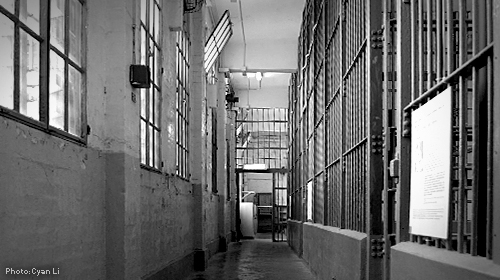Curtailing Immigration Prison System Can Reduce Spending Without Hurting Public Safety


Today, Roll Call published an op-ed we wrote on how curtailing immigration prisons is an easy way for Congress to begin to reduce the deficit, cut government spending, and reform our flawed immigration system.
In addition, there are several steps the Obama Administration can and should take now, without waiting for Congress, to reduce its unnecessary and expensive reliance on immigration prisons. Here are four:
- Alternative forms of mandatory custody: the Administration should take a more reasonable view of mandatory “custody,” by using forms of supervision short of incarceration, such as electronic monitoring, curfew restrictions, and home visits. The criminal justice world has long recognized that such forms of custody can protect public safety effectively at a fraction of the cost of incarceration. DHS’s own ATD program has worked to ensure that 94% of people appear for their immigration hearings.
- Bond hearings at six months of detention: the Administration should provide bond hearings in front of immigration judges to all people who are imprisoned at least six months. Under current practice, thousands of people—including longtime lawful permanent residents facing deportation for minor crimes; asylum seekers arrested at the border; and individuals seeking federal court review in their deportation cases—are held without ever being given a bond hearing. As a result, many are needlessly imprisoned for months or even years on the taxpayer’s dime. A growing majority of federal courts have recognized that such long-term imprisonment without a bond hearing raises serious constitutional concerns.
- Better screening for mandatory custody: the Administration should reform the screening process to determine who is subject to mandatory custody. DHS places individuals charged with deportation for certain crimes in mandatory lock-up. But many of these individuals are not actually deportable—either because their alleged crimes turn out not to be deportable offenses, or because they are eligible for immigration relief. Mandatory custody is particularly irrational in these cases because these individuals have every incentive to fight their cases rather than flee.
- No mandatory custody for old offenses: the Administration should also stop subjecting people to mandatory custody for old crimes. The immigration laws require DHS to take custody of immigrants “when [they are] released” from criminal custody in order for mandatory custody to apply. But DHS applies mandatory detention to people it takes into custody any time after their release from criminal custody—even if more than a decade later. As a result, DHS applies mandatory detention to individuals who have been out in society for years and leading productive lives. The overwhelming majority of federal courts have held that this policy violates the immigration statute. The Administration should abandon this senseless practice.
Americans do not need—and can no longer afford—immigration prisons for people who do not need to be locked up. In fact, it is in DHS' interest to limit its use of mandatory detention so that it has the flexibility to use its limited detention beds only on immigrants who need to be detained. Notably, former INS officials have publicly criticized mandatory immigration lock-up as "unfair and inefficient" policy. These four steps will help ensure that our detention dollars are spent in a smart, prudent, and humane way.
Learn more about immigration detention: Sign up for breaking news alerts,follow us on Twitter, and like us on Facebook.

